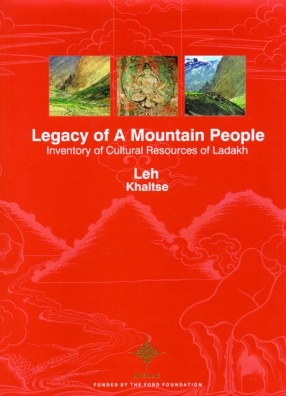
Tibet

583 books


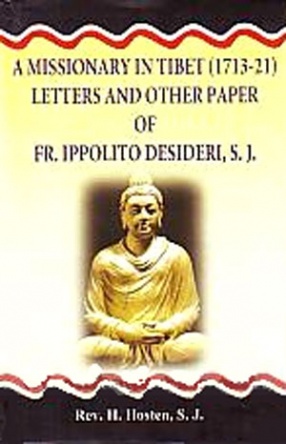








The Inventory of Cultural Resources is a village level listing of Ladakh’s vast range of immovable heritage. The information collated for this listing is based largely on interviews with village headmen, owners and custodians of heritage properties, village elders and members of the tsogspa. The main aim of the programme was to understand how communities defined their heritage. The inventory was prepared over a 4 year period and was carried out largely by a ...



Through the prism of life emerges The Mad Tibetan: Stories From Then and Now. While Thulli draws you deep in to the sordid and bleak life of a prostitute in Karnathipura in Mumbai, The Piano Tuner gently tugs at your heart with music from the piano that Feroze Batliboi once played. Ruth Mayberry inspires with her never-say-die spirit, yet grapples with loneliness. D, The Morning After; Bombay Central, The Mad Tibetan, Premonition, Sisters, Birds, are all facets ...

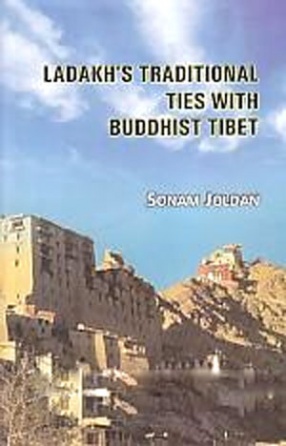
Ladakh is a remote area in the western Himalayan region. In spite of the huge mountain ranges, Ladakh had developed into an active and important religious, cultural and commercial relation with many areas including Buddhist Tibet. Ladakh along with Sikkim, Bhutan and Mustang in the cis-Himalaya continuous to be practiced Tibetan Buddhism as a living religion, as it has been for thousands years. This study traces the deep historical relationship between Ladakh and ...


Tibet had been at intermittent war with various Chinese governments and other regional powers for hundreds of years before the most recent Chinese take over in 1951 with the signing of the 17 Point Agreement for the peaceful liberation of Tibet. It is difficult to determine if Tibet at this time was an autonomously administered subordinate state to China or if it was truly independent. The ancient Sino-Tibetan relations are complicated and questions remain ...

Study on the life and works of Sron-btsan-sgam-po, King of Tibet, 617-64.

For nearly a decade, Matteo Pistono smuggled out of Tibet evidence of atrocities by the Chinese government, showing it to the United States government, human rights organisations, and anyone who would listen. Yet Pistono did not originally intend to fight for social justice in Tibet - he had gone there as a Buddhist pilgrim. Pistono's quest led him to Tibet and to a meditation master whose spiritual brother is Sogyal Rinpoche, bestselling author of The Tibetan ...


The Two Truths in Bon is an innovative survey of Madhyamika's two truths theory of the Bon religion in comparison with Indian and Tibetan Madhyamika. Since 1960's Bonpo study has developed rapidly in western countries. Concerning its doctrine, they seem to have focused on Vajrayāna and Dzogchen. On the other hand, the study on Sūtrayāna has been left behind. Madhyamika philosophy is the fundamental basis of Vajrayana and Dzogchen, and the two truths is the basic ...


Refugees are a significant social category of the present century. They are well exemplified in the characterization of the first half of this century as the age of the homeless. As such they have always required humanitarian concern dealing with human sufferings and deprivation of their proper their rehabilitation., Since they have been drifted from one place to another, their evoked conditions have interests among the social scientists to look at the socio ...

In March of 1959 a 23 year old Tibetan youth named Tanzin Gyatso burst onto the world stage. Fleeing his native country to govern in exile from India the Dalai Lama has become one of the great leaders of our time. With Tibet occupied by communist China he and others envisioning a free Tibet have worked ceaselessly to save his countrys civilization culture and freedom while advocating negotiation and non-violence.Freeing Tibet is the story of this fifty-year long ...

As a result of Tibet's continuous cultural interactions with India, Tibetans have produced the largest number of translations of Indian literature. Tibetan Tripitaka, known as Kanjur and Tanjur preserves over five thousand titles translated from Indian languages, mainly Sanskrit, embracing treatises on grammer, poetry, rhetoric, logic (the fundamental works on Buddhist logic by Dignaga, Dharmakirti, etc.), politics and social ethics (such as ...

This paper discusses the laws and regulations governing refugees in India in general and the Tibetan refugees in particular. In this context, it describes the actual practices in two Tibetan settlements in Karnataka. The paper highlights the ways in which Tibetans have Negotiated the restrictions they face as refugees in India and created enabling conditions in exile. The discussion reveals the shortcomings of the current protection framework and the necessity of ...
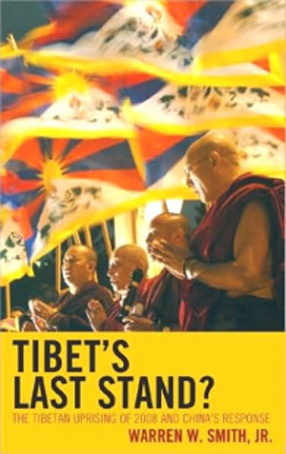
This deeply knowledgeable book offers the first sustained analysis of the 2008 uprising in Tibet, which revealed much about Tibetan nationalism and even more about Chinese nationalism. Retracing the complex history between China and Tibet, noted expert Warren Smith describes the uprising itself and explores its broader significance for Chinese-Tibetan relations. He sharply critiques China`s use of heavy-handed propaganda to recast the uprising and obscure its ...

This study approaches Buddhist Medicine and Surgery by comparing the medico-social events, people who were involved in it and the tools they used; from mainly three civilisations of contemporary period, the Greeks, Romans and Buddhists who prospered in Gandhara. The interactions of all three people for long periods in history are well documented; the study raises the obviously intriguing question why in some areas they influenced each other markedly but not at ...

The subject of this volume, the Tibetan (treasure revealer) Gshen-chen Kludga', is a crucial figure in the development of Bon as an organised religion after the eleventh century. Here for the first time he is situated in the context of what was happening in Buddhism during this period. By scruitining his life and gter-ma (treasures), that were to be of much controversy in later ages, the author sheds light on the mechanism of Tibetan polemical tradition and ...



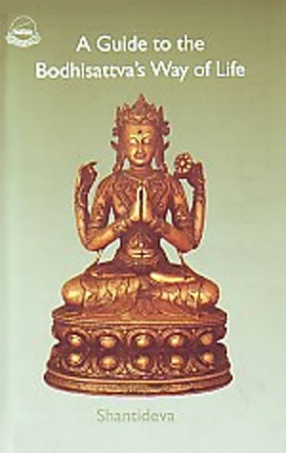
Shantideva's Bodhisattvacharyavatara (A Guide to the Bodhisattva's Way of Life) holds a unique place in Mahayana Buddhism akin to that of the Dhammapada in Hinayana Buddhism and the Bhagavad-Gita in Hinduism. In combining those rare qualities of scholastic precision, Spiritual depth and poetical beauty, its appeal extends to a wide audience of Buddhists and non-Buddhists alike. Composed in India during the 8th century of the Christian era, it has since been an ...
